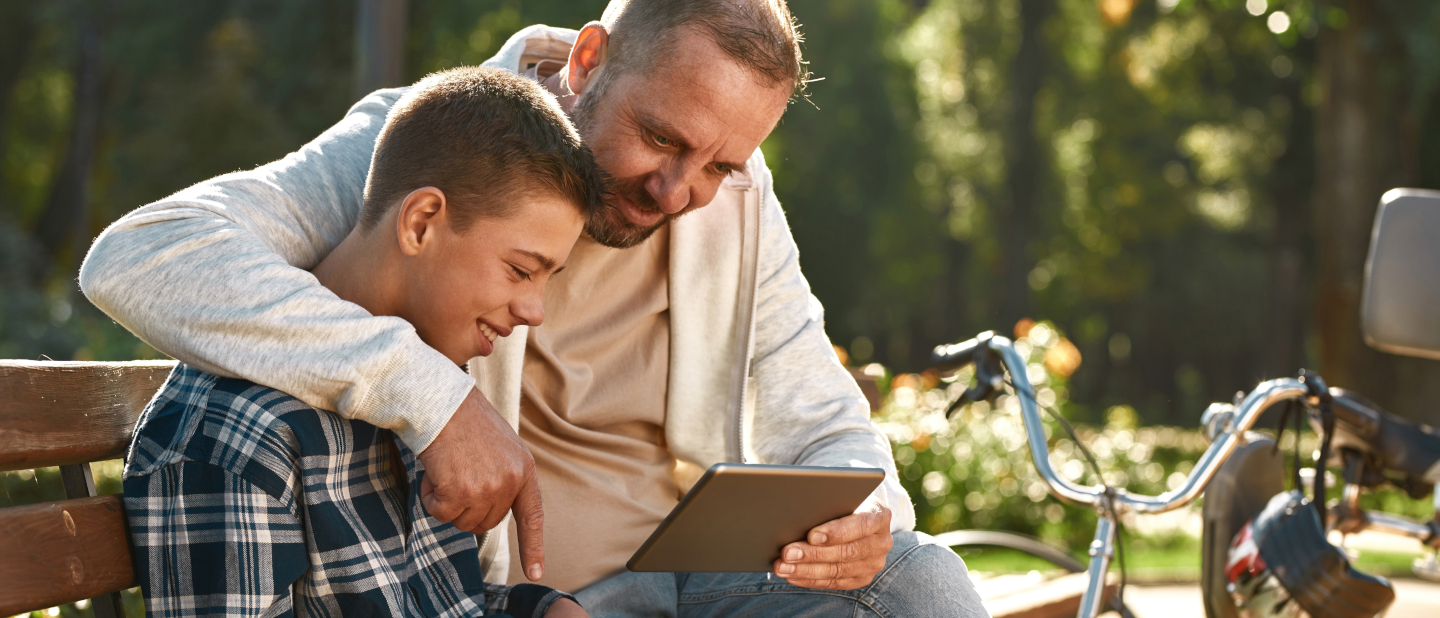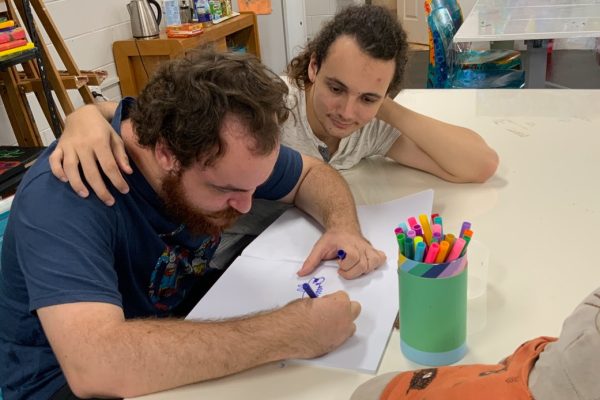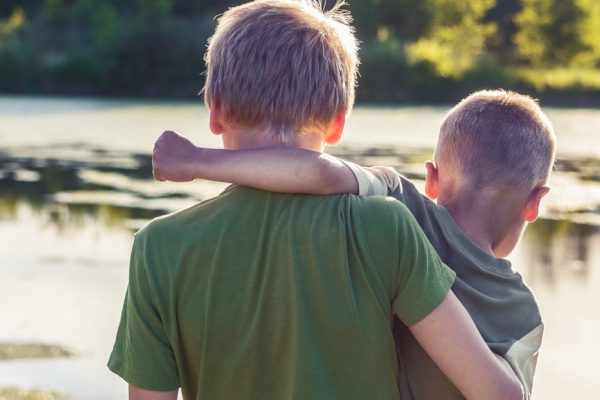
A guide to creating and using social stories and visuals
If your child or young adult has challenges in understanding and navigating social situations and/or unfamiliar environments, social stories such as storyboards and other visual aids are a useful tool that can significantly enhance communication skills, social interactions, and help their overall well-being in many different scenarios.
Social stories are short personalised narratives designed to help those who need support in understanding social concepts, routines, and expectations. They typically include descriptive sentences paired with appropriate visuals to illustrate the intended message.
HOW THEY HELP
Social stories offer numerous benefits for people with disability:
Enhanced understanding: These tools break down complex social situations into manageable and understandable components, making it easier to grasp important concepts and expectations.
Improved communication: Visual supports provide a non-verbal means of communication, which is particularly beneficial for children with language or communication difficulty.
Reduced anxiety: Many of our kids and young people experience anxiety in unfamiliar or even familiar social situations. Social stories and visuals can alleviate anxiety by providing predictability, structure, and guidance on how to navigate what’s to come.
Increased independence: Visual supports encourage independence and self-management by enabling children to follow routines, make choices, and solve problems independently with visual prompts and reminders.
Support for transitions: Transitioning between activities, environments, or routines can be challenging for a variety of reasons. Social stories and visuals help the user prepare for transitions by outlining what to expect and how to adapt effectively.
Promotion of social skills: By explicitly teaching social norms, rules, and behaviours, social stories and visuals help children develop essential social skills, such as turn-taking, sharing, empathy, and problem-solving.
WANT TO PUT A SOCIAL STORY INTO ACTION?
Here’s a step-by-step guide to help you.
1. Identify the target situation: Begin by pinpointing the specific social situation, event, or behaviour you want to address. It could be anything, from going to a doctor’s appointment to waiting in line at the grocery store or attending a birthday party. The key is to focus on scenarios that your child finds challenging or confusing.
2. Define the goal: What do you want your child or young person to learn or understand from reading the story? For instance, the goal might be to help them understand what will happen during a day out and the transitions that they will encounter.
3. Keep it simple: Social stories should be written in clear and straightforward language that is appropriate for an individual’s age and comprehension level. Avoid using ambiguous terms or complex vocabulary that could confuse them.
Shorter is usually better!
4. Structure the story: Divide the story into clear sections: introduction, body, and conclusion. The introduction sets the scene, the body describes the situation or behaviour in detail, and the conclusion reinforces the desired outcome or lesson.
5. Use visual supports: Incorporate pictures, drawings, or photographs to enhance understanding and engagement. Visual supports can help individuals better comprehend the story’s content and make it more relatable.
6. Maintain a positive tone: Keep the tone of the story positive and supportive. Focus on highlighting appropriate behaviours and positive outcomes rather than dwelling on mistakes or negative consequences.
7. Include personalisation: Tailor the story to your person’s preferences, interests, and experiences whenever possible as this increases its relevance and resonance.
8. Provide rehearsal opportunities: After reading the social story, offer opportunities to practice the skills or behaviours described. Role-playing or real-life simulations can help reinforce the story’s lessons in a practical context.
9. Review and revise: Periodically revisit and revise the social story as needed. An individual’s understanding and needs may change over time, so it’s essential to ensure that the story remains effective and relevant.
10. Seek feedback: Finally, gather feedback from the individual, caregivers, teachers, or therapists to assess the story’s effectiveness. Adjustments may
be necessary based on their input and observations.
Here’s an example of how you could put together a social story for a visit to the park:
TITLE: A SAFE AND FUN VISIT TO THE PARK
1. Heading to the park
Visual: Picture of a child holding an adult’s hand, smiling, and walking towards a park entrance. Text: “Today, we are going to visit the park. The park is a nice place to be, and we can have fun while staying safe.”
2. Arriving at the park
Visual: Image of the park entrance with trees, a playground, and people in the background.
Text: “When we arrive at the park, we will see other people. Some might be walking, running, or playing. It’s okay; we will have our own space to enjoy.”
3. Staying safe
Visual: Illustration of a child standing close to an adult, with a safe space circle around them.
Text: “We will stay close to our grown-up or buddy. If we feel overwhelmed, we can communicate how we feel. We can find a quiet spot if we need a break.”
4. Being around other people
Visual: Picture of a playground with kids playing, and the child waiting patiently. Text: “There might be kids playing on the playground. We will wait our turn to use the swings and slides. If someone is too close, we can step back or move to another area. It’s okay to watch other kids play if we don’t want to join in right away.”
5. Things we will see and hear
Visual: Picture of a child listening with hands cupped over ears, looking at birds, and smelling a flower. Text: “We might hear birds, the wind, or people talking, other children may be laughing and talking. If it gets too loud, we can use headphones or earplugs. We will see green trees, colourful flowers, and maybe some animals like birds or bugs. We might smell flowers, grass, and fresh air.”
7. Taking breaks
Visual: Image of a child sitting on a bench with a favourite toy and a snack.
Text: “We can take breaks whenever we need to. Just tell our grown-up or buddy. We can bring a favourite toy or book to help us feel calm. Drinking water and having a snack can also help us feel better.”
8. Transitioning home
Visual: Picture of a child and adult walking back to the car, waving goodbye to the park.
Text: “When it’s time to leave, our grown- up or buddy will let us know. We will say goodbye to the park. We can walk back to the car or bike and head home. If we feel sad about leaving, we can talk about coming back another time.”
9. Looking forward to next time
Visual: Image of a child thinking about the park, with a thought bubble showing the park.
Text: “We can visit the park again on another day. Every visit might be a little different, and that’s okay. We will always have fun and stay safe.”






